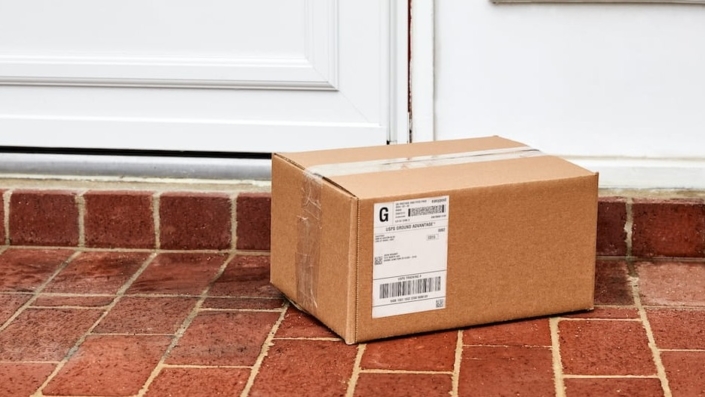Thanks to reliable shipping carriers, packages don’t go missing very often. But occasionally businesses get complaints about packages never arriving. Sometimes, these shipments are flagged as failed deliveries and returned to the sender or rerouted to the customer. Other times, they seem to vanish into thin air.
One of the top reasons for delivery issues like these? Incorrect shipping addresses.
To make sure every package makes it into the customer’s hands, it’s essential to verify shipping addresses before printing labels. An AVS makes the process painless. But what is an AVS, and how does it work?
What is AVS?
An address verification system, or AVS, is technology that checks whether a customer’s shipping address is valid to ensure their package gets sent to the right location. The system runs automatically when a shopper enters their address, cross-checking information against the destination country’s address database and flagging any errors.
An AVS generally has the following capabilities:
- Confirming that addresses can accept deliveries (i.e. they’re not abandoned buildings or empty lots)
- Identifying and correcting typos
- Filling in missing information, such as zip codes or unit numbers
- Standardizing address formatting
- Classifying addresses as residential or commercial
Looking for a reliable AVS? Learn more about the EasyPost Address Verification API.
Why is address verification important?
Address verification is important because typos, misspellings, missing information, incorrect formatting, and other small errors can easily cause shipments to get lost or delayed. An AVS detects these issues before they can result in failed deliveries, saving time and money for sellers and customers alike.
How does AVS work in shipping?
Once your AVS is up and running, the address verification process is effortless for your business and seamless for shoppers. Let’s take a look at how it works:
- A customer enters their shipping address during the checkout process. They’ll need to include their street, unit number, city, state, zip code, and country.
- The AVS automatically checks the address. For domestic shipments, the AVS refers to the United States Postal Service address database. For international shipments, it refers to the destination country’s address database. If the system discovers an issue, it prompts the customer to correct it.
- The fulfillment process moves forward! You and your customer have peace of mind knowing the package is going to a valid destination.
Note: Sometimes a customer will decline to correct the address. As long as you’ve given them the option, it’s okay to move forward with their original entry. Just assume they know their address better than the system.
Should I use AVS for my business?
Yes, any business shipping packages to customers should use an AVS to make sure packages arrive at the correct address. While address verification doesn’t always work perfectly (especially for international shipments—more on that below), the benefits outweigh any potential challenges.
Benefits of AVS
Address verification systems improve package deliverability and customer satisfaction, saving time and money for your business.
Fewer failed deliveries and delays
With so many people using their phones for online shopping, it’s easier than ever to make mistakes during the checkout process. Let’s just say that tiny text and unreliable autocorrect features aren’t a good combination.
That’s why address verification is essential. By ensuring that addresses are entered and formatted correctly, an AVS reduces the likelihood of delivery errors. That means fewer lost packages, reshipments, refunds, and shipping delays.
Money saved
Failed deliveries aren’t just inconvenient for the customer, they’re expensive for your business.
If a product gets lost in transit (regardless of whose fault it is), buyers will expect you to send them a replacement or issue a refund. If a shipment is marked as a failed delivery, it will be returned to a carrier hub and eventually to your business. Reshipping these packages comes with a cost—one customers will expect you to cover.
You also have to consider the indirect costs of lost or delayed packages, including wages for customer service representatives who handle questions about shipments that don’t show up.
Long story short: Address verification technology saves money by helping you avoid issuing refunds or replacements, paying to reship packages, or spending precious customer service time on lost package inquiries.
Time saved
Very small businesses may be able to away with reviewing and verifying addresses manually. But as businesses scale, manual address verification quickly becomes too time consuming. By automating the process using an AVS, you avoid wasting time fixing rejected labels, tracking down lost packages, and dealing with frustrated customers.
Better conversion rates
Address verification tools make the checkout process smoother for customers, instantly alerting them to potential errors and automatically formatting addresses the right way. With a simple, friction-free checkout process, more shoppers will follow through on purchases rather than abandoning their carts.
Improved customer satisfaction and trust
Lost packages and shipping delays erode customer trust, making it less likely that they’ll purchase from you in the future. For consumers, it doesn’t matter who’s at fault for lost or late packages—even if they typed their address incorrectly, they’ll blame a bad shipping experience on your business.
The best way to maintain high customer retention and loyalty? Use an AVS to ensure the delivery experience goes off without a hitch.
Potential challenges of AVS
While address verification systems work for both domestic and international shipping, cross-border deliveries can pose a challenge. That’s because an AVS alone isn’t all-knowing—it needs to draw information from the destination country’s address database. But every country records and manages addresses a little differently, leading to inconsistencies. For example:
- Not all countries offer street-level address verification data.
- Some countries have more address formatting options than others.
- Some countries don’t update their address databases frequently.
Despite the challenges, a good AVS will still be able to verify international addresses. Providers like EasyPost get creative with technical solutions to make sure packages make it to the customer, whether they’re traveling to another state or halfway across the world.
Improve your shipping experience with EasyPost’s AVS
If you’re focused on providing a great delivery experience—and what online store isn’t?—an AVS is an essential tool in your logistics tech stack. Verifying addresses automatically helps reduce delivery errors, streamline the checkout process, and improve customer satisfaction.
EasyPost’s Address Verification API makes it easy to get started.
With EasyPost, address verification is free with each label purchase; once you’re integrated with the Shipping API, you have full access to address validation. This allows you to verify addresses worldwide, in over 240 countries and territories (see which locations are supported).




